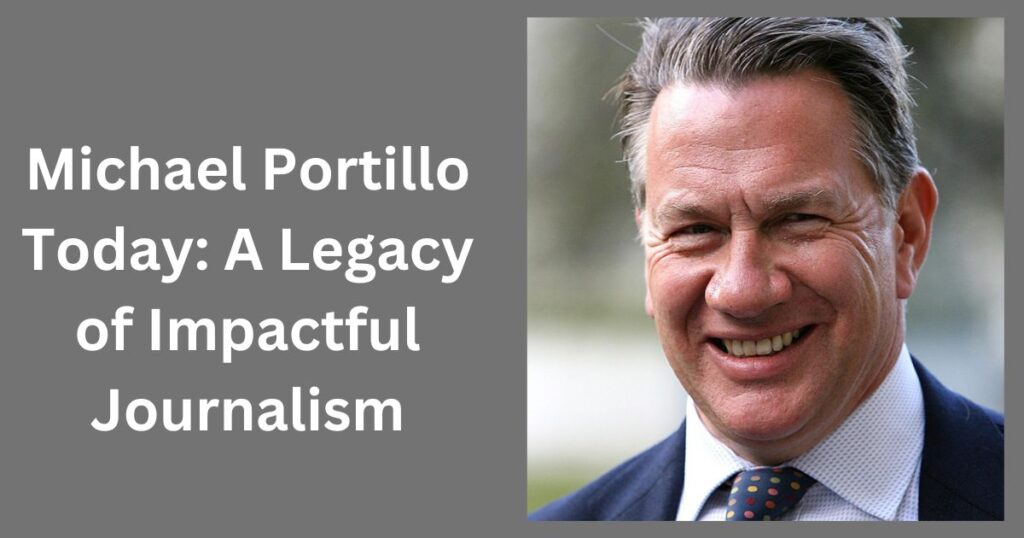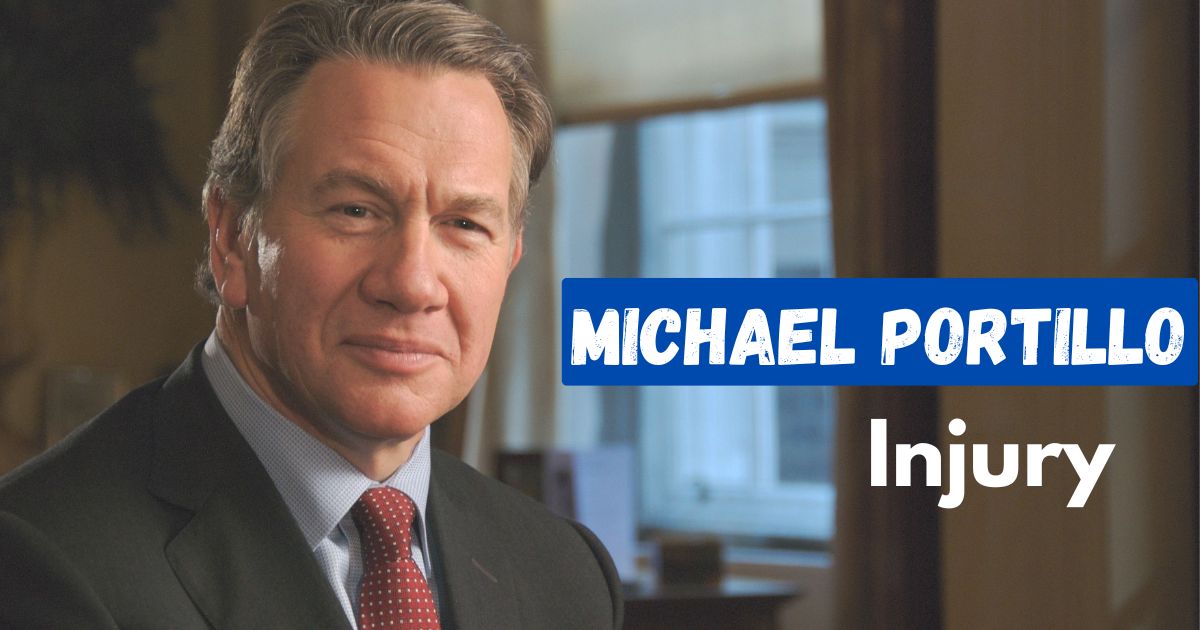In the world of television, few personalities have pushed the boundaries quite like Michael Portillo. From politician to presenter, his journey has been anything but ordinary.
But it’s his willingness to put himself in harm’s way for the sake of public awareness that truly sets him apart.
Let’s explore the physical and emotional toll of Portillo’s daring career, and what it means for the future of investigative journalism.
The Incident: What We Know So Far
Recently, the name Michael Portillo has been buzzing in media circles, not for his latest documentary, but for an injury sustained during filming. While details are still emerging, sources close to the production have reported that Portillo was involved in an accident while investigating dangerous working conditions in a factory.
The incident, which occurred just last week, has left Portillo with minor injuries and a newfound perspective on workplace safety. Eyewitnesses describe a scene of chaos as equipment malfunctioned, but praise Portillo’s calm demeanor throughout the ordeal.
Portillo’s Career: A Brief Overview

To understand the significance of this incident, we need to look at Portillo’s unique career trajectory. Once a prominent British Conservative politician, Portillo made a surprising pivot to broadcasting after leaving politics. This career 180 has seen him tackle some of the most controversial and challenging topics on television.
From exploring the remnants of the British Empire to investigating execution methods, Portillo has never shied away from difficult subjects. His approach combines historical insight with personal experience, often putting himself in the shoes of those he’s reporting on.
Impact of the Injury on His Work
The recent injury has undoubtedly thrown a wrench in Portillo’s packed schedule. Several ongoing projects have been put on hold as he recovers. However, those close to Portillo say this setback has only fueled his passion for exposing dangerous working conditions.
Public reaction has been largely supportive, with fans praising Portillo’s dedication to his craft. This incident, while unfortunate, has sparked important conversations about the risks journalists take to bring us the stories that matter.
The Role of Media in Injury Reporting
In the age of social media, news of Portillo’s injury spread like wildfire. While some outlets stuck to the facts, others couldn’t resist sensationalizing the story. This raises important questions about responsible journalism and the public’s right to information.
Portillo himself has taken a measured approach, using his platform to shift focus from his personal experience to the broader issues of workplace safety. It’s a masterclass in turning a potential PR nightmare into an opportunity for public education.
Recovery and Rehabilitation: What Lies Ahead
Looking forward, Portillo’s team has released a statement outlining his expected recovery timeline. While he may be sidelined for a few weeks, there’s no doubt he’ll be back in action soon, possibly with a new perspective on risk assessment in documentary filming.
This experience may well shape Portillo’s approach to future projects. Don’t be surprised if workplace safety becomes a recurring theme in his upcoming works. If anything, this incident has reinforced Portillo’s commitment to shining a light on overlooked issues.
Broader Implications for Television Personalities
Portillo’s injury serves as a stark reminder of the risks television presenters often take. From wildlife documentarians facing dangerous animals to war correspondents in conflict zones, the pursuit of a story can come at a high personal cost.
This incident has reignited debates about network responsibilities and insurance considerations for high-risk productions. Some industry insiders predict stricter safety protocols, while others worry this could lead to overly cautious, less impactful journalism.
Read Also: Olivia Lynch Brooklyn Posters
The CS Gas Experiment: When Journalism Gets Personal

Perhaps no other incident in Portillo’s career better illustrates his commitment to experiential journalism than the infamous CS gas experiment. As part of a documentary on execution methods, Portillo voluntarily subjected himself to tear gas, an experience that left him gasping for air and temporarily blinded.
This experiment, while controversial, provided viewers with a visceral understanding of the effects of tear gas. Portillo’s firsthand account, describing the burning sensation in his eyes and lungs, brought home the reality of this crowd control method in a way that mere description never could.
The public reaction was mixed, with some praising Portillo’s dedication while others questioned the necessity of such extreme measures. Regardless, the experiment sparked important discussions about the use of tear gas in law enforcement and its potential for abuse.
Risking Personal Safety for Public Awareness
The CS gas incident is just one example of Portillo’s willingness to put himself in harm’s way for the sake of public education. From spending a night in a maximum-security prison to experiencing the grueling conditions of a Victorian workhouse, Portillo has consistently pushed the boundaries of immersive journalism.
These experiences have undoubtedly taken a toll on Portillo, both physically and emotionally. Yet, they’ve also resulted in some of the most impactful and memorable moments in British television. The question remains: is the potential for injury worth the educational value these experiences provide?
The Ethics of Execution Methods: A Controversial Investigation
One of Portillo’s most controversial and impactful projects has been his investigation into execution methods. This deep dive into capital punishment took him to the Louisiana State Penitentiary, where he walked the same path as death-row inmates, from their last meal to the execution chamber.
Portillo’s examination of lethal injection and hanging raised serious ethical concerns about the humanity of these methods. His work highlighted the potential for suffering and the involvement of non-professionals in administering lethal injections.
This project, while difficult to watch at times, provided critical insights into a topic often shrouded in secrecy. Portillo’s willingness to confront these uncomfortable truths head-on has contributed significantly to the ongoing debate about the ethics of capital punishment.
Emotional Scars: The Death of a School Friend
Not all injuries are physical, as Portillo’s documentary on the suicide of his school friend Gary Findon poignantly illustrates. This deeply personal project explored the lasting impact of suicide on family and friends, revealing the emotional scars that can persist for decades.
The documentary showed the profound grief experienced by Gary’s parents and brother, even years after the tragedy. By sharing this personal story, Portillo shed light on the long-term effects of suicide and the importance of mental health awareness.
This project stands out in Portillo’s career as a testament to his willingness to confront not just physical dangers, but emotional ones as well. It’s a powerful reminder that the most impactful journalism often comes from a place of personal connection and vulnerability.
Michael Portillo Today: A Legacy of Impactful Journalism

Today, Michael Portillo stands as a unique figure in British broadcasting. His net worth, while substantial, pales in comparison to the wealth of experiences and insights he’s shared with viewers over the years. From his distinctive new hairstyle to his multilingual abilities (Portillo is known to speak several languages fluently), he continues to captivate audiences.
While details about his personal life, including where he lives and his children’s names, are kept private, his public persona remains as engaging as ever. Rumors about Michael Portillo’s husband or brothers occasionally surface, but Portillo maintains a dignified silence on such matters, preferring to let his work speak for itself.
Frequently Asked Questions
Has Michael Portillo got a problem with his hip?
There’s no public information about Michael Portillo having a specific hip problem. He’s known for his active lifestyle in his TV shows, but like anyone, he may experience health issues that aren’t publicly disclosed.
What happened to Michael Portillo?
Michael Portillo transitioned from a career in politics to become a successful broadcaster and TV presenter. He’s known for his travel documentaries and political commentary, often putting himself in challenging situations for his shows.
How far did Michael Portillo walk?
In his various travel shows, Portillo has walked extensive distances across different countries. However, there’s no specific total distance publicly recorded. His journeys often involve train travel interspersed with walking tours.
Is Michael Portillo still married to Carolyn Eadie?
Yes, as far as public records show, Michael Portillo is still married to Carolyn Eadie. They’ve been married since 1982 and have maintained a private personal life despite Portillo’s public career.
Why was Michael Portillo’s father exiled from Spain?
Michael Portillo’s father, Luis Gabriel Portillo, was exiled from Spain in 1939 due to his left-wing political views. He opposed Francisco Franco’s fascist regime during the Spanish Civil War.
Did Portillo actually walk the Pyrenees?
Portillo has filmed in the Pyrenees for his travel shows, but there’s no record of him walking the entire Pyrenean mountain range. He typically showcases portions of his journeys rather than completing entire long-distance trails.
Who is Caroline Eadie?
Carolyn Eadie (sometimes mistakenly referred to as Caroline) is Michael Portillo’s wife. She’s a former Saatchi & Saatchi executive who has largely stayed out of the public eye, supporting Portillo’s career from behind the scenes.
Conclusion
As we reflect on Michael Portillo’s career and the various injuries – both physical and emotional – he’s sustained in pursuit of the truth, we’re left with a complex picture. On one hand, his willingness to put himself in harm’s way has resulted in some of the most impactful and educational television in recent memory. On the other, it raises serious questions about the lengths to which journalists should go to tell a story.
Portillo’s experiences with CS gas, execution methods, and personal loss have undoubtedly left their mark. Yet, they’ve also contributed significantly to public awareness on issues ranging from capital punishment to workplace safety and mental health.
As Portillo recovers from his latest injury, one thing is clear: his impact on British journalism is indelible. Whether you view his methods as admirably committed or unnecessarily risky, there’s no denying the conversations his work has sparked.










